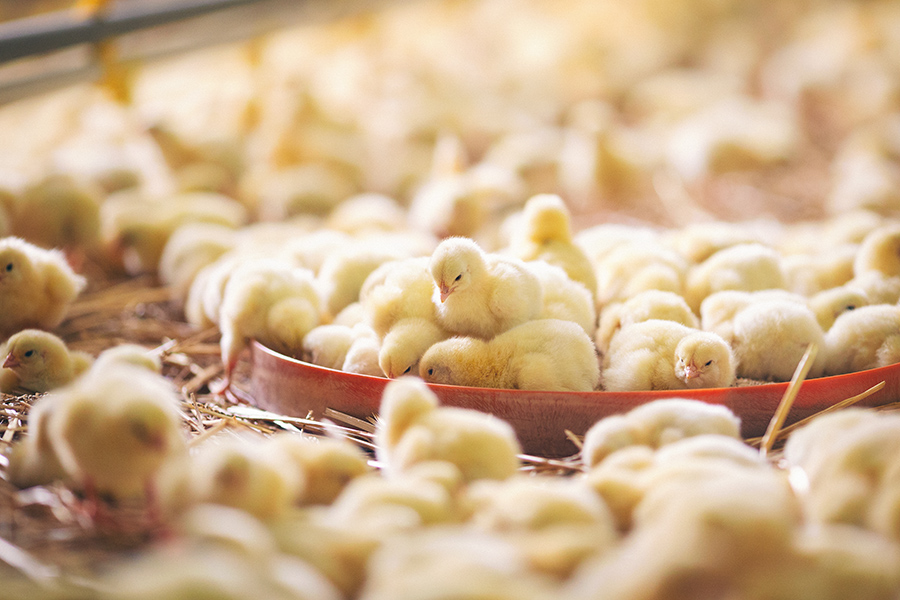Once the house is dry place four inches (4) of litter material. Common types of litter are wood shavings, straw, rice husks and coffee husks. Good litter material should insulate the floor and absorb moisture from chicken droppings. Correct litter management is fundamental to bird health, performance and final carcass quality which subsequently impacts the profit.
Learning Hub
Our commitment to customer success drive us to provide tools and resources necessary for your poultry business to achieve profitability.
Placement
As soon as the previous flock has been cropped/depleted, the flock house and equipment must be thoroughly cleaned and disinfected. It is important to allow the house to remain empty for at least two weeks before the next flock is placed. This allows time to reduce the build-up of disease-causing organisms and to prepare the house effectively for the next flock.
- After the birds have been removed from the house, remove all the equipment and dampen the ceiling, wall, and litter with water. This helps to minimise dust during litter removal
- Remove all old litter and dispose of it at least 1.5 km away from the farm
- Wash the house with water and soap starting from the roof followed by the walls and finally the floor. Allow the house to dry before finally spraying the whole house with disinfectant solution starting from the roof
- Wash and disinfect all the equipment from the house
- Repair and maintenance of the house and equipment should be carried out during this time
Litter Management


Pre-Placement Checklist
Chick Placement

Poultry Centres Near Me
Stop by any Kenchic Poultry Centre for feeds, day old chicks, specialized technical and lab assistance or a quick consult with one of our vets.


